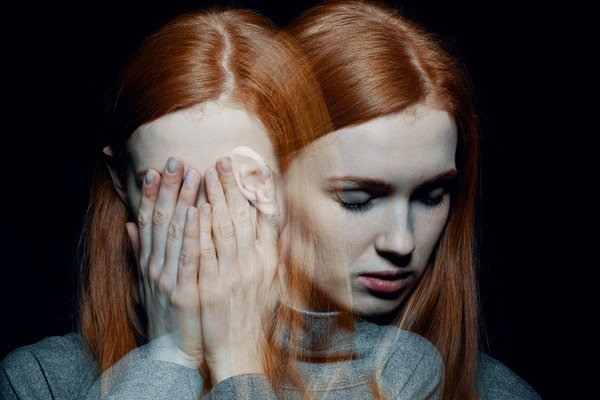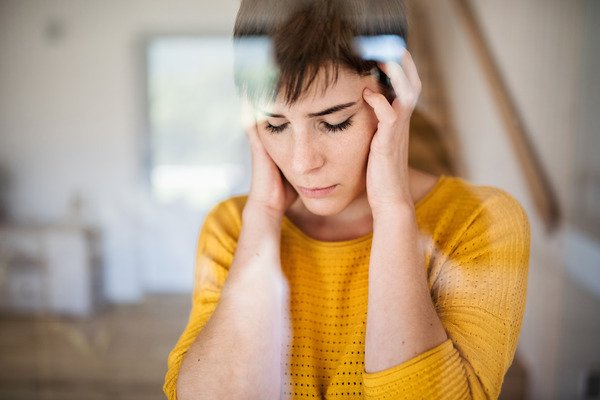Mixed anxiety-depressive disorder is almost a pandemic. Do you think you may suffer from this disorder? Discover the symptoms, causes and how to treat it to return to living normally.

The World Health Organization has warned that the number of people with depression who also suffer from anxiety is increasing in recent years in our country. The statistics are very worrying, because it is a mixed anxiety-depressive disorder
During recent years, more than 322 million people suffered from depression, 4.4% of the global population, and of these more than 264 million also suffered from anxiety. In Spain, 2,408,700 were diagnosed with depression that year, 5.2% of the population. The data presented by the United Nations organization for our country are worrying: in recent decades, people who suffered from depression increased by 18.4%. In addition to depression, many people suffer from other problems associated with this disorder, including: the anxiety
The data are alarming, especially if we think about the mixed anxious-depressive disorder Did you know that it is more common than we think? People who suffer from it show symptoms of both depression and anxiety, which aggravates the condition of the disease and expands the prejudices that persecute that person.
Causes of anxiety-depressive disorder
There are many studies on the causes and origin of both depression and anxiety. So much so, that through research they have reached different conclusions.
- Biological factors: Some people have certain imbalances in neurotransmitters in the brain that make them more likely to suffer from both anxiety and depression.
- Environmental factors: Although biology influences the likelihood of suffering from mixed anxiety-depressive disorder The reality is that the environment also influences whether you suffer from it. This depressive anxious state is usually seen in people who have certain risk factors.
- Psychological factors: Many people who suffer from depression and do not treat it end up leading to a anxiety depressive disorder The reason is because these two diseases feed off each other. This is why it is very common that if anxiety is not resolved it can also lead to depression, you end up suffering from this mixed disorder. This does not mean that it meets the diagnostic criteria for both disorders separately, but rather that it is characterized by symptoms of dysphoria (depressed mood), demotivation, lack of energy, and inability to experience pleasure. These problems are accompanied by anxiety symptoms, such as intense fear and/or a feeling of inability to perform tasks or activities of daily living.

Risk factors for anxiety-depressive syndrome
Although these two diseases are very common in our society, the reality is that there are some risk factors that lead to develop anxious depression
- Family members with mental disorders: Many people who have relatives with a disorder, whether anxiety, depression, or any other type, may be more likely to suffer from this disorder. mixed disorder
- Economic problems: The economy and professional situation are two factors that influence our mental health. The reason is that not being able to make ends meet is a very common cause that generates both stress and anxiety and depression If this continues over time and we see no way out of economic problems, we can generate symptoms of depression.
- To be a woman: Women are more likely to suffer from mixed anxiety-depressive disorder The current role of women, with an enormous burden of family, social and work stress, points to one of the causes. The greater emotional expressiveness of women and the search for help that contrasts with the education of men not to express discomfort or not ask for help, can influence an underdiagnosis of the disorder in men.
- Loneliness: When a person does not have the support of family or friends, problems can be one of the causes of suffering from this. anxiety depressive disorder
- Serious illness: Serious health problems for yourself or those close to you, as well as the fear of dying, are factors that can lead to suffering from this condition. Anxiety depressive syndrome
- Personality: There are some types of personalities that are more prone to suffer from a anxious depression People who tend to be pessimistic or dependent on others may be affected by this emotional problem.
- Low self-esteem: Having a poor conception of oneself and therefore suffering from low self-esteem can trigger a anxious depression
- Traumas: Trauma in childhood or adolescence can influence the development and mental health of adults.
- Stress: One of the most common consequences of having a life full of stress is suffering from a anxiety depressive disorder
- Excessive worries: People with a high level of self-demand, with a tendency to try to control everything, can develop anxiety symptoms that, when maintained over time, degenerate into symptoms of depression
- Conflictive situations in the environment: Being subjected to constant stress in the family and/or in the work environment can generate exhaustion and loss of energy that leads to a mixed anxiety-depressive disorder
Symptoms of mixed anxiety-depressive disorder
People who suffer from mixed anxiety-depressive disorder They show physical and psychological alterations that correspond to both problems. The feeling of intense sadness along with restlessness or fear feed back into the symptoms. Among the main ones, we can mention the following:
- Sleep disturbances: suffer from this anxious depressive syndrome It causes its victims to oscillate between different sleep disorders, such as insomnia, excessive sleep, and lethargy.
- Alterations in appetite: They can manifest themselves through absence or compulsion at mealtime. So much so that even the anxious depression It can lead to eating disorders such as bulimia and anorexia.
- Apathy or emotional lability: Experiencing constant changes in emotional well-being, as well as a lack of ability to express, identify and feel both positive and negative emotions, is one of the vegetative symptoms of this disorder.
- Physical and mental fatigue: Feelings of exhaustion as a result of constant mental effort. Difficulty resting even when exhausted.

- Chest pressure: Somatic complaints are one of the symptoms associated with mixed anxious-depressive disorder Tremors, palpitations, dizziness, dryness and tension can alarm the person who suffers from it, leading them to believe that they have a cardiovascular problem; however, they are symptoms of somatization of emotions.
- Uncontrolled thoughts: Pessimistic thoughts, marked by the sadness and negativity of depression, are mixed with anxious thoughts, which focus on the future and the possibilities of failure.
- Difficulty concentrating: Whether due to a flight of ideas or problems focusing on something. This triggers errors, dispersion and introspection, causing prejudices to develop intellectual activities and social interactions.
- Decreased libido and sexual appetite: One of the most frequent problems of mixed anxiety-depressive disorder is to lead to a lack of sexual interest. This causes the person to end up feeling worse about themselves, damaging their self-esteem.
- Shortness of breath, sweat and muscle tension: These are characteristic symptoms of anxiety that also manifest along with some physical pathologies of the depression
- Constant discomfort and fears: These can trigger fears about the future, as if something bad was going to happen.
- Sadness and low self-esteem: There is a tendency to question the qualities and capabilities of the person who suffers from it.
How to treat a mixed anxiety-depressive disorder?
This type of disorder characterizes a comorbidity condition, since there is a combination of two psychopathological problems that manifest at the same time. Depending on the severity, only psychological therapy may be necessary or it may be complemented with pharmacological treatment.
Psychiatric treatment will help stabilize the body, minimizing physical symptoms. And psychological support will provide adequate support for understanding emotions, strengthening self-esteem and detecting the events that could have triggered these symptoms. Some psychological techniques that have given good results are problem-solving therapy, relaxation training, restructuring distorted or exaggerated thoughts, and behavioral activation.
The causes of two psychiatric disorders They are always associated with physical, psychological and social factors, but their onset usually coincides with a stressful or traumatic event, such as bereavement, unemployment, changes in routine, acquisition of new responsibilities, etc.
It is worth highlighting that the WHO data is based on diagnosed cases. It is estimated that the numbers could be higher, if the absence or difficulty that exists in some points to search is taken into account. professional support When it comes to mental health, there are still prejudices, a lack of information and infrastructure that is difficult to access.








